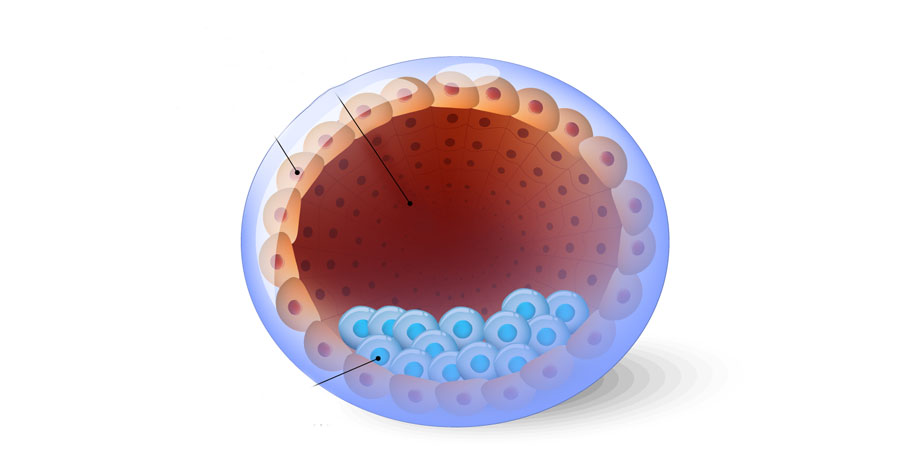The blastocyst is a structured formed by the embryo on the 5th-6th day after fertilization. It consists of a large number (>70) of cells and is characterized by a cavity called blastocele, which is formed in the centre of the embryo and filled with liquid.
The improvement of embryo culture media has enabled the culturing of embryos in the lab up to the blastocyst stage. Only a certain percentage of fertilized oocytes, approximately half of them, reach this stage.
Therefore, the number of blastocysts which are available for transfer or cryopreservation may be significantly smaller than the initial number of embryos. In few cases, none of the embryos reach the blastocyst stage. In this case, embryo transfer is not performed.
It should be emphasized that culturing at the blastocyst stage does not improve embryo quality, yet it allows a more objective evaluation. As a consequence, a high-quality blastocyst has almost double implantation potential compared with a 2nd or 3rd day high-quality embryo. Therefore, embryo transfer of fewer embryos can be performed, maintaining the same success rates and avoiding a multiple pregnancy.
In brief, embryo culture up to the blastocyst stage can greatly improve success rates in certain cases, given that all the requirements for this method are met.








